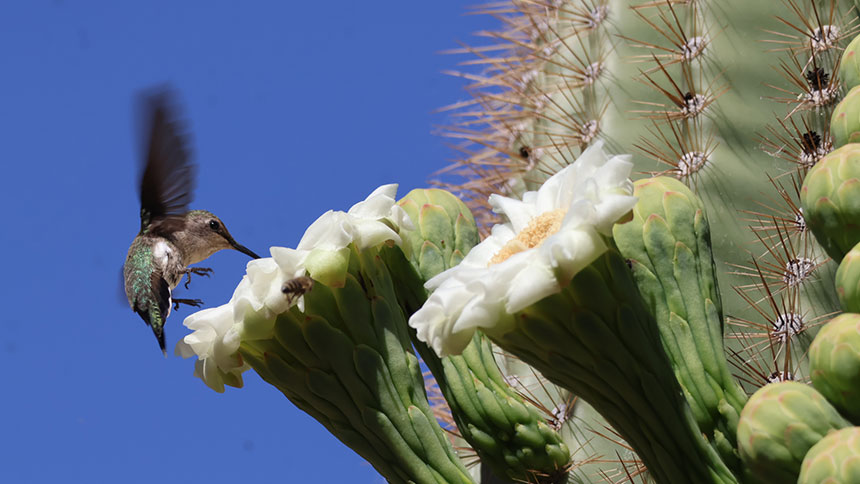
One of the most recognizable plants of the Sonoran Desert is the Saguaro Cactus. A keystone species that can reach up to 50 feet tall. They have an elaborate root system that spills out beneath the desert soil for as long as 100 ft wide which supports them in reaching these towering heights.
May is a great time of year to begin witnessing the amazing blooming and fruiting cycles of these plants. Beginning around April, you will see the thick round buds begin to set on the crown of the cacti. As the buds unfold in the evening hours they will begin to be pollinated by an assortment of creatures, later setting fruit through June and July. Beginning in the evening hours nighttime pollinators such as Hawk moths and the lesser long-nosed bat will visit. During the daylight hours numerous species also feed on the pollen of these amazing plants such as bees and birds like White winged Doves Gila and ladder backed woodpeckers and many others.
Beginning in June and July you will begin to see these amazing plants set fruit. Many of our native animal species rely on the hearty fruits to survive! You might have seen common birds such as the White winged Dove perched atop a cacti indulging on fruits but have you ever seen the striking contrast of a yellow or orange Oriole with its beak pecking away at a fruit? Our native Sonoran desert Tortoises also love to snack on these fruits.
Saguaro Blooms
While there is really no definite answer, A Saguaro begins to bloom around the age of 35 years old. They are generally 7ft tall when they begin to bloom. This is an interesting fact because without the seeds of the cacti, they can not reproduce. When you think about the amount of time that takes, it puts the life stages of the cacti in perspective. Due to increasing temperatures and drought, this Keystone species is unfortunately struggling to reproduce. Younger Saguaros are less resilient than the towering elder plants.




